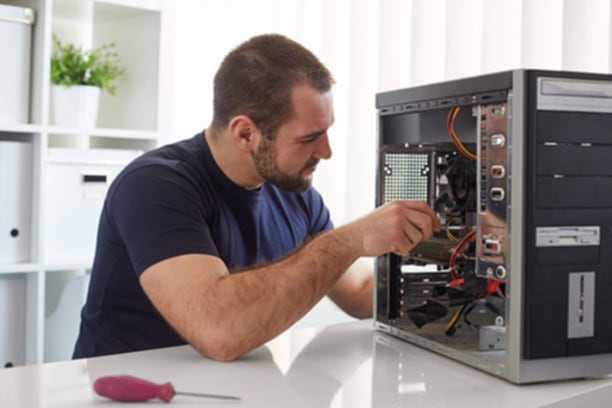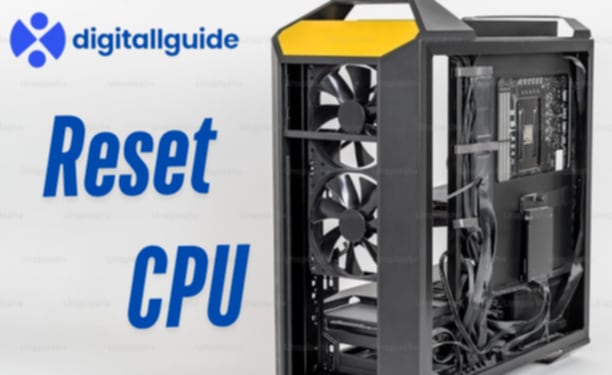If you’re looking to reset your CPU, it’s important to understand that the CPU itself can’t be reset like software or a device—it doesn’t store data or settings. However, you can reset the system settings and configurations that affect how your CPU performs. This includes restarting your computer, resetting BIOS/UEFI settings, or doing a system reset on Windows to clear any software issues causing high CPU usage or performance glitches. These steps can help restore normal function without needing to touch the CPU hardware.
In This Article
Why Does My CPU Need a Reset?
First, let’s talk about why your CPU might be struggling. Think of your CPU like the brain of your computer. Over time, it can get cluttered. Just like a messy desk, a busy CPU can’t work efficiently.
- Overheating: Dust and poor ventilation can cause your CPU to overheat.
- Software Issues: Corrupted files or conflicting programs can slow things down.
- Resource Hogging: Too many programs running at once can overwhelm your CPU.
- Outdated Drivers: Old drivers can cause performance issues.
Understanding these culprits is the first step in learning how to reset CPU effectively.

Essential Steps: How to Reset CPU Through Software Tweaks
Now, let’s get practical. You don’t always need to open your computer. Often, a software reset can do the trick.
1. Closing Unnecessary Programs: A Quick CPU Refresh
Start by closing any programs you’re not using. This is a simple but effective way to free up CPU resources.
- Open Task Manager (Ctrl + Shift + Esc).
- Look at the “Processes” tab.
- Identify programs using high CPU percentages.
- Click “End Task.”
This is a fast and easy method for how to reset CPU load.
2. Updating Drivers: The Secret to Smooth CPU Functioning
Outdated drivers can cause major performance issues. Updating them can make a huge difference.
- Open Device Manager (search for it in the Windows search bar).
- Expand “Processors.”
- Right-click on your CPU and select “Update driver.”
- Choose “Search automatically for drivers.”
Keeping your drivers up-to-date is a key part of how to reset CPU performance.
3. Power Settings: Optimizing for Performance
Your power settings can also impact CPU performance. Make sure they’re set for optimal speed.
- Go to “Control Panel” and then “Power Options.”
- Select “High performance.”
This simple tweak can significantly boost your CPU’s speed.

Advanced Methods: How to Reset CPU Through Hardware Checks
Sometimes, software tweaks aren’t enough. You might need to check your hardware.
1. Cleaning the CPU: Essential for Preventing Overheating
Dust is a common enemy of CPU performance. Cleaning your CPU can prevent overheating.
- Turn off your computer and unplug it.
- Open the computer case.
- Use compressed air to gently remove dust from the CPU fan and heatsink.
- If you can remove heat sink, remove old thermal paste and apply new one.
This is a crucial step in how to reset CPU temperature.
2. Checking for Physical Damage: Ensuring CPU Integrity
Physical damage can also cause CPU issues. Inspect your CPU for any signs of damage.
- Look for bent pins or cracks.
- Ensure the CPU is properly seated in its socket.
Addressing physical damage is vital for how to reset CPU functionality.
3. BIOS Reset: A Deeper Dive into CPU Settings
For more advanced troubleshooting, you can reset your BIOS settings.
- Restart your computer and enter the BIOS setup (usually by pressing Del, F2, or F10).
- Look for an option to “Load Default Settings” or “Reset to Default.”
- Save and exit.
This can help resolve issues caused by incorrect BIOS settings.
Preventative Measures: Keeping Your CPU Running Smoothly
Learning how to reset CPU is essential, but preventing issues is even better.
- Regularly clean your computer.
- Keep your software and drivers updated.
- Monitor your CPU temperature.
- Use a good antivirus software.
- Close unneeded background programs.
By following these tips, you can keep your CPU running smoothly for years to come.
Conclusion: Mastering How to Reset CPU
Learning how to reset CPU performance is a valuable skill. Whether it’s through simple software tweaks or more advanced hardware checks, you can keep your computer running at its best. Remember, regular maintenance is key. So, take these steps, and enjoy a faster, more efficient computer.

FAQ: How to Reset CPU
Q: How often should I reset my CPU? A: It depends on your usage. If you notice performance issues, it’s a good idea to check. Regular cleaning and software updates can prevent frequent resets.
Q: Can resetting my CPU damage my computer? A: If done correctly, resetting your CPU shouldn’t cause damage. However, be careful when working with hardware and always unplug your computer before opening the case.
Q: Will resetting my CPU delete my files? A: No, resetting your CPU performance through software tweaks or cleaning won’t delete your files. Only a full system reset or reinstalling the OS will do that.
Q: How do I know if my CPU is overheating? A: Signs of overheating include slow performance, frequent crashes, and loud fan noise. You can also use software to monitor your CPU temperature.
Q: What is the best way to clean my CPU? A: Use compressed air to remove dust from the CPU fan and heatsink. Be gentle and avoid touching sensitive components.


This Post Has 2 Comments
Pingback: Laptop Overheating: 10 Genius Fixes! - Digitallguide
Pingback: How to Find Out What Motherboard I Have (Genius Methods!) - Digitallguide